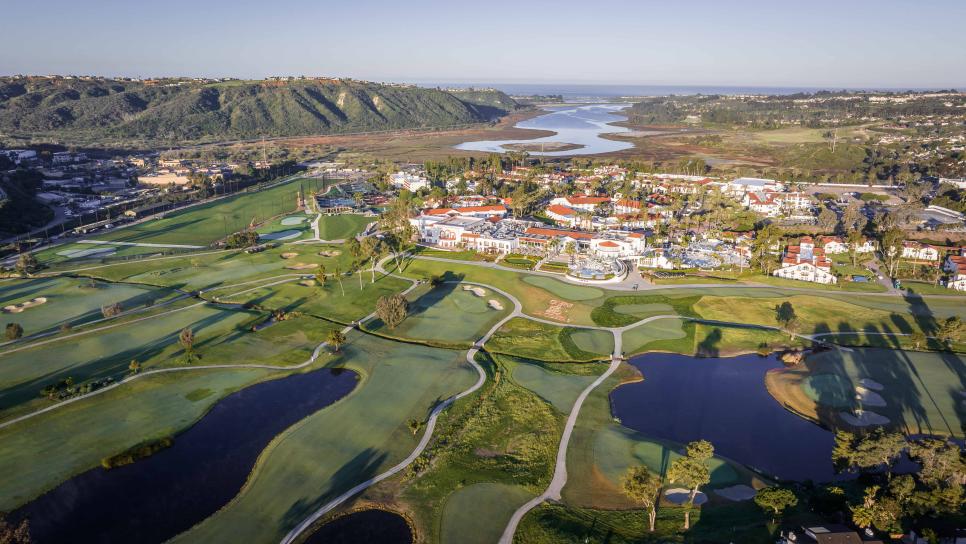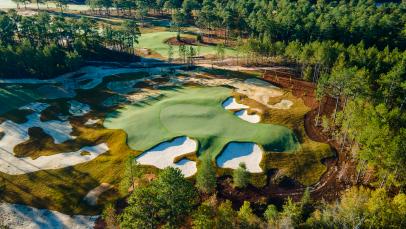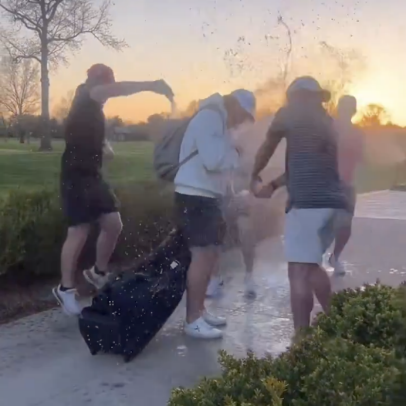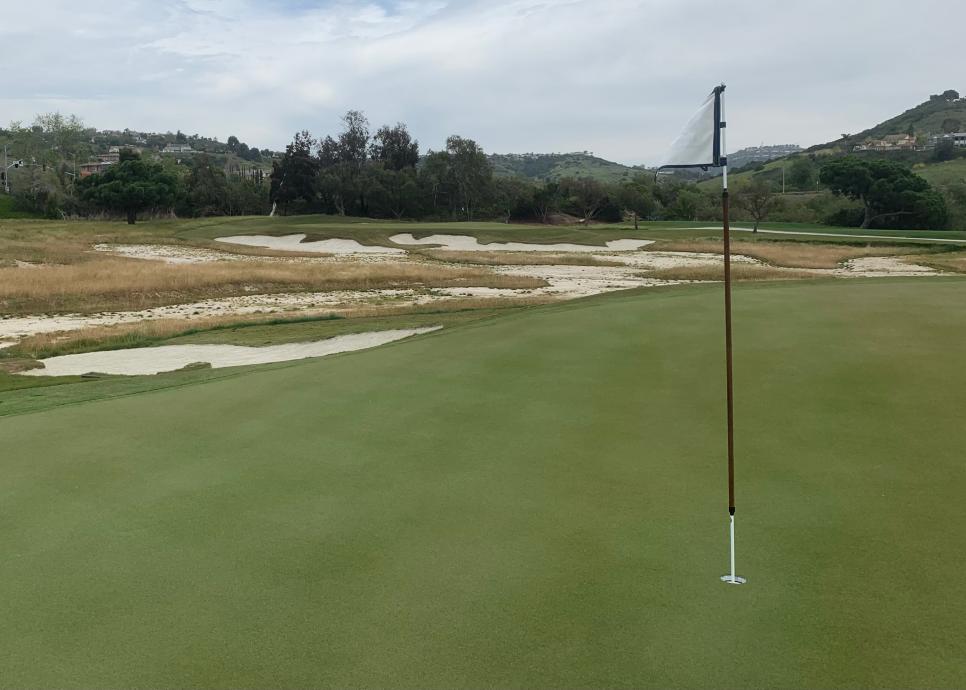La Costa remake puts historic course back in national spotlight – Australian Golf Digest

- by Admin
- April 22, 2024

CARLSBAD, Calif. — Over nearly four decades on the PGA Tour, outside of the four major championships, the La Costa Resort & Spa was one of the most sought after destinations for every player. In the 1960s through 1990s, be you Palmer, Nicklaus, Watson or Woods, you could only reach San Diego’s northern coastal enclave by winning a title the previous year, getting you into the Tournament of Champions. Then, in 1999, the tour entrusted La Costa with the Match Play at the dawn of the World Golf Championships.
La Costa was big time, and if the two Dick Wilson-designed courses on the property—their holes combined into a championship composite course—didn’t exactly have Winged Foot or Shinnecock Hills’ pedigree, that hardly mattered when the golfers and their wives were pampered like movie stars—or, more infamously here, mob bosses—and could stroll from their rooms to the first tee.
Then, in 2007, the PGA Tour packed up and moved the Match Play to Arizona, and in the general public’s consciousness, La Costa has been something of a fondly remembered ghost ever since.
Until now.
In less than a month, the resort will be back on our televisions as the host of the NCAA Men’s and Women’s Division I Golf Championships. Most of the game’s best amateurs will compete on a North Course that has been massively renovated at a cost of more than $20 million by one of the most revered design duos in the game, Gil Hanse and Jim Wagner. Several million more was spent on a expansive practice facility. And if all goes well in this audition, the long-term goals for La Costa are rather audacious.
In a movement led by University of Texas men’s golf coach John Fields, his athletic director, Chris Del Conte, retired Oklahoma State AD and legendary golf coach Mike Holder, and La Costa’s owners, Omni Hotels & Resorts, the goal is to have the Omni La Costa Resort & Spa go beyond hosting the NCAAs in the next three to five years and become the permanent site of the championships.
“That’s the dream,” Fields told a small gathering of Omni executives and media this past week as the team previewed the North Course layout that has yet to open to the public after months of frenetic effort to get it ready for the NCAAs. The women and men will compete in consecutive weeks starting May 17, and Golf Channel will have more than 50 hours of combined coverage.
An overhead view of the Omni La Costa Resort & Spa. The 18th hole in the center runs northwest and generally plays into the wind. The 16th and 15th greens are lower right. (Patrick Koenig photo)
To create what is being dubbed as the potential “Road to Omni La Costa” for decades to come, Fields also offered this piece of reality: “That golf course has to perform.”
That was the task handed to Hanse and Wagner, who likely would not have accepted the work without their relationship with Omni, whose resort is part of the PGA of America’s Frisco complex in Texas that will host numerous majors over the next decades, and the prospect for the NCAAs making La Costa their permanent home.
“College golf is a new frontier for television, and we’re hopeful that people will want to watch college golf and watch La Costa, and we’ll bring La Costa back to the limelight with more history,” Wagner said in an interview with Golf Digest.
“La Costa was a really good golf course and hosted big events,” Wagner added, “but it kind of lost its way a little. It just really became just an everyday member golf course. Cart paths everywhere; the bunkers got pulled pretty far away from the greens. The grass got tired; it looked worn out. We were able to bring it back to life.”
Previously known as the Champions Course, the North got a $10 million revamp by architect Damian Pascuzzo and Steve Pate, the former PGA Tour player, in 2011, but that was nip-and-tuck cosmetic stuff and to correct some drainage issues on a site that was notorious for flooding. La Costa did host a few significant events, including the LPGA as a one-off and a memorable 2014 California State Amateur in which current World No. 3 Xander Schauffele beat now fellow PGA Tour pro Beau Hossler.
More From Golf Digest  College Golf Why the world’s top-ranked amateur golfer is staying in school despite having earned his PGA Tour card
College Golf Why the world’s top-ranked amateur golfer is staying in school despite having earned his PGA Tour card  New Courses I got to play Pinehurst #10—it’s unlike anything I’ve seen
New Courses I got to play Pinehurst #10—it’s unlike anything I’ve seen  Viral Videos Masters breakout star Neal Shipley gets (wet) hero’s welcome upon return to Ohio State
Viral Videos Masters breakout star Neal Shipley gets (wet) hero’s welcome upon return to Ohio State
With the NCAA on board, Omni basically gave Hanse and Wagner carte blanche to completely redo La Costa with the same verve as their high-profile work at the likes of The Los Angeles Country Club and The Olympic Club. There also was the added element of making La Costa both playable for the public and presenting a stern and fair test to the best college players of both genders. Hanse was lauded for a similar undertaking for the Olympic Course in Rio that staged the return of golf to the Summer Games in 2016.
The result of Hanse Design’s La Costa redo is that those who know the course well will hardly recognize it, other than the basic flow, and fresh eyes will take in a layout with both the requirements of modern architecture and old-school quirks and challenges that include wide swaths of native areas and barrancas.
There are always two critical queries for new or renovated courses: What’s the length and how are the greens?
In this case, the most notable changes do come in the putting surfaces. Again, the team was tasked with creating playable public greens while thinking ahead to nearly exact pin placements that would force competitive golfers to consider every nuance. “We want to reward and challenge aggressive play and knowing that not everybody is going to hit every green, we wanted interesting recovery shots,” Wagner said.

The redsigned first hole of La Costa North is a prime example of the steep falloff areas around the greens. (Patrick Koenig photo)
Most of the North’s greens are hardly small, but their true sizes have been tightened by some sharp edges that fall off into tightly mown areas. There’s no better example than the 581-yard dogleg sixth, where the narrow green will repel anything short and right to force an extremely delicate next attempt. “Maybe you hit your shot into the face of the slope there, or maybe you flop it,” Wagner said. “We want the top players to think about that, to put some doubt in their mind.”
In this modern bombers’ age, when most courses have to be lengthened to remain relevant for top-level competition, La Costa had enough space for Hanse/Wagner to reframe the puzzle. Numerous tees were repositioned to places never before thought of, including the No. 1 ground that nearly abuts the practice putting green so that the hole could be extended to 402 yards.
And if you think that sounds a bit wimpy for the current game, consider that the par-5 No. 2 is 616 yards—one of two par 5s, at sea level, that begin with a “6.” The other is the 18th, which can play at 609 into a healthy afternoon breeze. Wagner swears he doesn’t know what the final length came out to be, but the newly printed scorecards peg the tips at 7,500 yards. The beauty of needing this to be a resort course is that there are six sets of tees, so the NCAA Committee can basically make it any kind of length test for the men and women.
One point Fields makes is that when the NCAAs were played the last three years at Grayhawk in Scottsdale, Ariz., the longest hitters could only use drivers on a few holes. “We’re putting the drivers back in their hands,” he said of the La Costa setup that offers ample space off the tee on the longest par 4s, including two that can play at more than 500 yards. (There also is a beast of a par 3, with the 12th playing into the wind at a potential—this isn’t a typo—282 yards.)
On the subject of par 3s, let’s not forget the most famous hole at La Costa. It’s the North’s 16th, where Tiger Woods striped an iron in the rain to kick-in range, beating Tom Lehman in a T of C playoff a couple of months before his watershed 1997 Masters victory. Here, Hanse sought to pay homage to Augusta National’s 12th, challenging the tee shot over the pond with two front bunkers while providing a new bailout area (instead of bunkers) on the right.
The trend at pro major championships also is to offer risk-reward par 4s, and La Costa has two of them in the 359-yard 11th and 365-yard 15th. The 15th is a remnant of Pascuzzo-Pate, though for anybody considering going for it now, Hanse stiffened the test with a centered fairway bunker at 300 yards and deep bunkers fronting the green at 350 yards.
The 11th is part of the most re-imagined section in the farthest reaches of the property, where the many tour events never venturd. The seventh through ninth holes were basically Resort Golf 101, with a downhill dogleg left, a flat par 3 over a pond and an uphill dogleg right par 4 wrapped around another pond.

A view from the par-4 seventh green, across the native area looking toward the par-3 eighth green that architect Gil Hanse has dubbed “Little Terror.” (Tod Leonard photo)
The changes are stunning. All of the water was eliminated and replaced by barranca and native vegetation that mimics the nearby hillsides. There are LACC North qualities, to be sure, with plenty of sand wash and native stuff. Hanse dubbed the par-3 eighth the “Little Terror” because it has a small green surrounded by trouble, though at 200 yards from the back it’s hardly “little.” The ninth should be entertaining for the NCAAs because, if players are to cut the corner, it requires a full 320-yard carry over the native area, with any wayward balls potentially being lost—a fate potentially worse than if water was there.
To Fields’ original point, the golf course needs to display its wares, but this inaugural college test will hardly be representative of what it will be like in a couple of years. Part of the course was sprigged with 419 Bermuda grass, not sodded, and because of a cool and rainy winter those fairways are still a bit thin. The same can be said for the rough. (And we should note that all of the bunker layered with deep and heavy sand.)
The balance is that the Pure Distinction bentgrass greens—with only a couple of dozen rounds ever played on them—will produce the truest roll possible. But—and this will be big—the newness makes them extremely firm and bouncy, so holding lengthy iron shots is going to be a true test.
The green speeds are expected to be slightly slower for the women, with the men facing possibly up to 12 on the Stimpmeter. As they conversed last week, Fields pressed La Costa Director of Agronomy David Smallwood, who’s done impressive work to get the course this far, to see if he could make them even quicker. Smallwood shook his head and said with a smile, “Those are my babies out there.”
And this is La Costa’s rebirth.
This article was originally published on golfdigest.com
The Latest News
-
December 22, 2024AFL legend Aaron Shattock placed in induced coma following freak accident while operating an excavator
-
December 22, 2024Test discard brings the heat after Boxing Day axing
-
December 22, 2024Australian cricket team at MCG: Near 60% win record, unbeaten for three years | Cricket News – Times of India
-
December 22, 2024Zheng to skip United Cup, focus on Aussie Open
-
December 22, 20242024 runner-up Qinwen Zheng pulls out of Australian Open lead-in event





